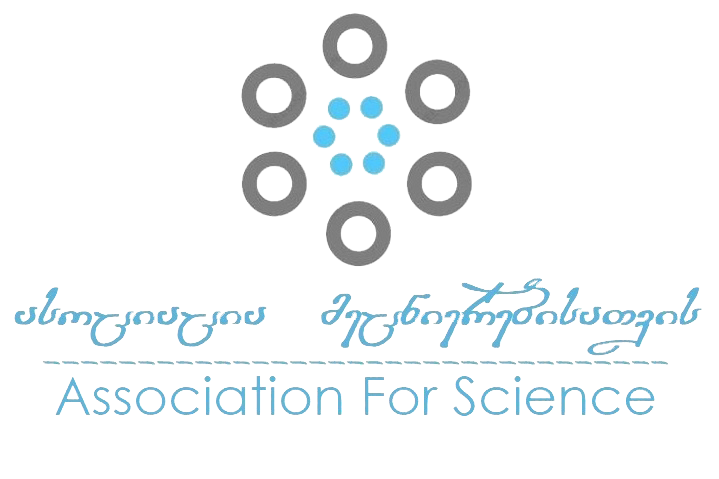CONCEPT „DGHE“ (Day) IN KARTVELIAN LANGUAGES
DOI:
https://doi.org/10.52340/sou.2023.19.04Keywords:
concept, Georgian languages, word formation, root, identical, morphological-semantic, unified, linguistic, systemAbstract
We have studied several concepts in order to find out what is common and different in Kartvelian linguistic data and how well they fit into a single lexical-semantic system. This time we studied the concept of the day in Svan and Megrelian-Laz. This concept is universal because it is present in any culture. It is an ancient concept of humanity, which reflects the basic characteristics of man, mind and intellectual abilities. „Day“ is defined in the dictionary of the Georgian language:
- The period of time from sunrise to sunset, the time from dawn to dusk;
- The period of time which contains 24 hours and which, as a calendar unit, has its name - day and night. there are seven days in a week;
- Such a period of time or a part of it, which is intended for something // for any activity (for work, leisure ...);
- Any number, date, month dedicated to any event - something remarkable day;
- In figurative sense -. Life, being.The concept of day in Kartvelian includes various semantic poems, phraseologies, which show a person's attitude to time, its course, as well as life expectancy and his fate or misfortune. These ancient and important time-related lexemes use one root for word production in Georgian, Svan and Megrelian-Laz languages (დღ) -დღა/დღე/დეღ (dgha/dghe/degh), from which the morphological-semantic indicators of lexical units obtained are completely identical in Kartvelian languages. These coincidences allow us to conclude that the concept “Day” reflects a unified system in Kartvelian.
References
ასათიანი (2012): ი. ასათიანი ი, ლაზური ლექსიკონი, თბილისი, 2012;
დიუმეზილი (2009): ჟ. დიუმეზილი, ლაზური ზღაპრები და გა¬დ¬მო-ცემები (მ. ბუკია, ლექსიკონი), თბილისი, 2009;
თანდილავა (2013): ა. თანდილავა, ლაზური ლექსიკონი, თბილისი, 2013;
თოფურია, ქალდანი (2000): ვ. თოფურია, მ. ქალდანი, სვანური ლექ-სი¬კონი, თბილისი, 2000;
ლაზურ-მეგრული გრამატიკა (2015): ჭაბუკი ქირია, ლალი ეზუგბაია, ომარ მემიშიში, მერაბ ჩუხუა, ლაზურ-მეგრული გრამატიკა, I. მორ¬ფო-ლო¬¬გია, გამომცემლობა „მერიდიანი“, თბილისი, 2015;
ლიპარტელიანი, (2014): ა. ლიპარტელიანი, სვანურ-ქართული ლექსიკ-ო¬ნი (ჩოლურული კილო), თბილისი, 2014;
მაკალათია (1941): ს. მაკალათია, სამეგრელოს ისტორია და ეთნოგრაფია, თბილისი, 1941;
მასლოვა (2004): В. А. Маслова, Введение в когнитивную лингвистику, М., 2004;
ნენაფუნა, - ბუჩაკლიში ი., უზუნჰასანოგლუ ჰ., ალექსივა ი., დიდი ლაზური ნენაფუნა, İsmail Bucaklişı, Hasan Uzunhasanoğlu, İrfan Aleksiva, Büyük Lazca Sözlük, Didi Lazuri Nenapuna, სტამბული, 2007;
ჟღენტი (1936): ს. ჟღენტი, ჭანური ტექსტები, თბილისი, 1936;
სამუშია (1979): კ. სამუშია, ქართული ხალხური პოეზიის საკითხები, მეგრული ნიმუშები, თბილისი, 1979;
სვანური ენის ქრესტომათია, (ტექსტები შეკრიბეს ა. შანიძემ, მ. ქალდანმა, ზ. ჭუმბურიძემ), თბილისი, 1978;
ფენრიხი (1990): ჰ. ფენრიხი, ზ. სარჯველაძე, ქართველურ ენათა ეტიმოლოგიური ლექსიკონი, თბილისი, 1990;
ხალხური სიბრძნე, მეგრული და ლაზური ანდაზები, თბილისი, 1994;
ქაჯაია (2001-2006): ო. ქაჯაია, მეგრულ-ქართული ლექსიკონი, I-IV ტომები, თბილისი, 2001-2006;
ქეგლ (1955): ქართული ენის განმარტებითი ლექსიკონი, ტ. მე-4, თბილისი, 1955;
ქობალია (2010): ა. ქობალია ა., მეგრული ლექსიკონი, თბილისი, 2010;
შეროზია (1994): რ. შეროზია, ო. მემიშიში, მეგრული და ლაზური ანდაზები, თბილისი, 1994;
ჩიქობავა (1929): არნ. ჩიქობავა, I, ჭანური ტექსტები, ტფილისი, 1929;
ჩიქობავა (1936): არნ. ჩიქობავა, ჭანურის გრამატიკული ანალიზი, ტფილისი, 1936;
ცაგარელი (1880): ა. ცაგარელი, Мингрельские этюды, первый выпуск. Мингрельские тексты с переводом и обяснениями.Санкт-Петербургь, 1880;
ყიფშიძე (1994): ი. ყიფშიძე, რჩეული თხზულებანი, თბილისი, 1994;
ყიფშიძე ( 1939): ი. ყიფშიძე, ჭანური ტექსტები, ტფილისი, 1939;
ხუბუა (1992): მ. ხუბუა, მეგრული ტექსტები, ტფილისი, 1937.
ჯავახიშვილი (1992): ი. ჯავახიშვილი, თხზულებანი, ტ. X, თბილისი, 1992.



